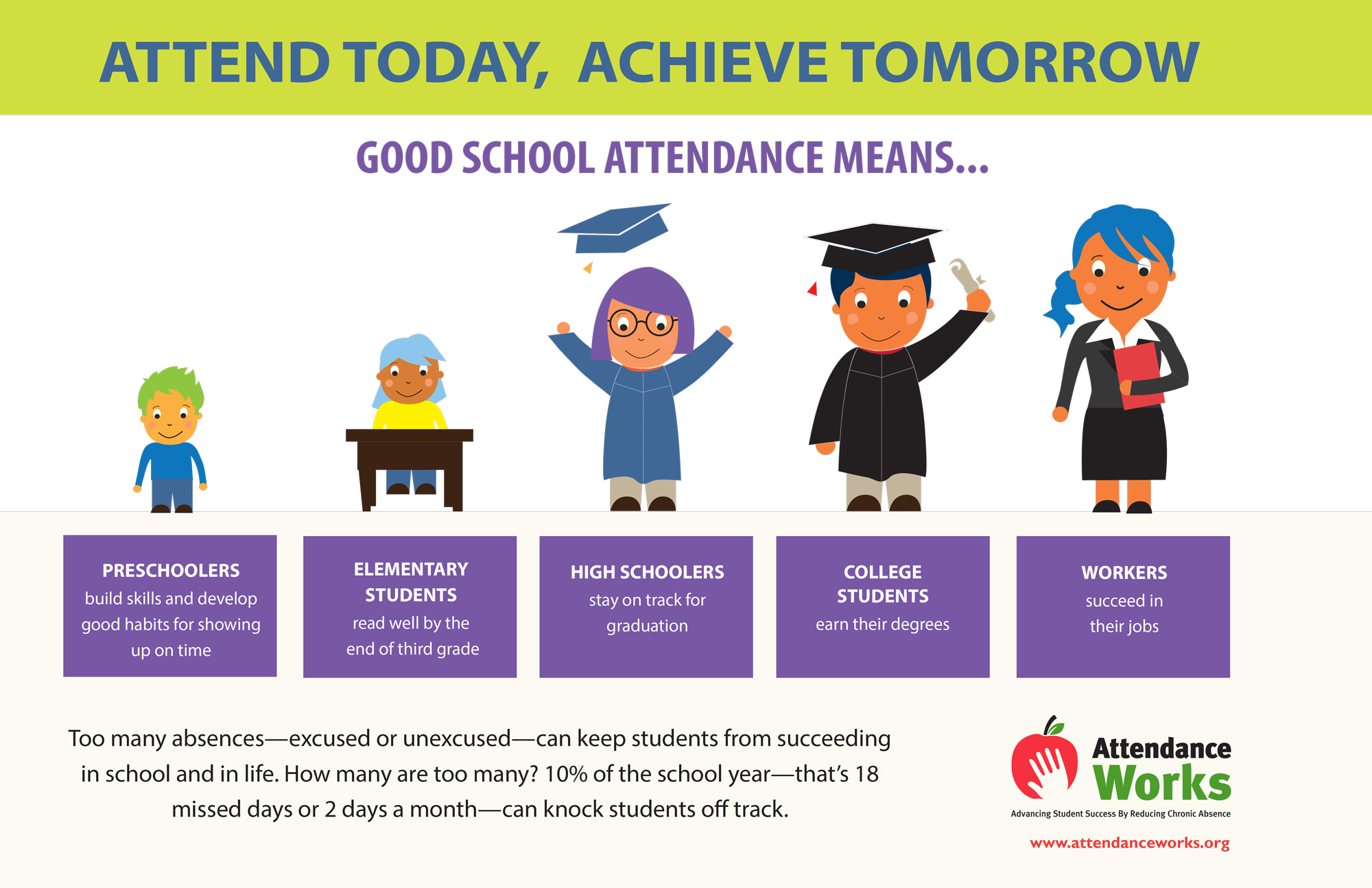Good attendance is essential to academic success. That’s why school officials are committed to raising awareness about the value of regular school attendance and focus on reducing chronic absenteeism each school year through their Attendance Matters campaign.
Chronic absence is described as missing 10 percent of the school year—or about 18 days—for any reason, excused or unexcused. That’s the point at which absenteeism begins to affect student performance. Starting as early as kindergarten or even preschool, chronic absence predicts lower third-grade reading scores. By middle school, it’s a warning sign that students will fail key classes and drop out of high school. Chronic absence disproportionately affects children from low-income families and communities, creating attendance gaps that directly impact achievement gaps in local schools. Many reasons that children miss too much school, especially in early grades, is because of chronic health problems, unreliable transportation or housing moves, which are all barriers that city agencies and community partners can help families address. According to Attendance Works, a national nonprofit dedicated to improving school attendance, research shows that students who miss two to four days in the first months of school are more likely to become chronically absent during the school year. By paying attention to absences early in the school year and early in a child’s academic career, we can turn around attendance and achievement.
The critical first steps to help stem chronic absenteeism:
- Build a habit and a culture of regular attendance
- Identify and address barriers to getting children to school, and
- Use data to determine when and with whom chronic absence is a problem.









